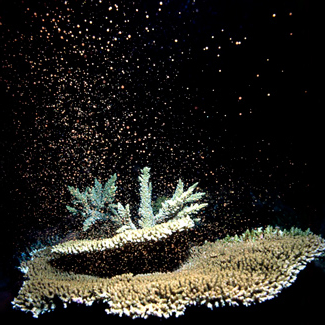Coral drift as good Reef gauge
 Coral spawning has been used to judge the potential effects of dredge spoil and pesticide pollution on marine environments.
Coral spawning has been used to judge the potential effects of dredge spoil and pesticide pollution on marine environments.
Marine researchers say that on the Great Barrier Reef each year, millions of coral larvae are released into reef waters.
The spawn replenish and regrow reefs that had been damaged or destroyed, but researchers at the Australian Institute of Marine Science (AIMS) have looked into concerns that poor water quality could threaten the survival prospects of the larvae.
In an interview with ABC this week, AIMS’ Dr Andrew Negri said the young coral could be made vulnerable by dumps, spills and run-off.
“The coral spawning and the events following coral spawning are really crucial for the regeneration of healthy reefs and also the reefs that have been damaged,” he said.
“We need high levels of success or else we won't get the replenishment on the reefs and the reefs will be affected in the long term.
“We're looking at [how] sediments from river plumes and dredging, as well as coal dust and pesticides that make their way down through river systems and into the GBR, may be affecting coral fertilisation,” he said.
Dr Negri’s colleague Dr Britta Schaffelke said there are many risks.
“We understand a lot of what affects a lot of adult marine organisms like corals and seagrasses ... but we really have to learn about what goes on with the early life stages like the larvae, the baby corals and so on. We understand a lot of what affects a lot of adult marine organisms like corals and seagrasses ... but we really have to learn about what goes on with the early life stages like the larvae, the baby corals and so on,” she said.
“They are more sensitive to a number of pressures and these are mostly pressures that have to do with pollution, with turbidity of the water, with sedimentation and so on,” she said.







 Print
Print